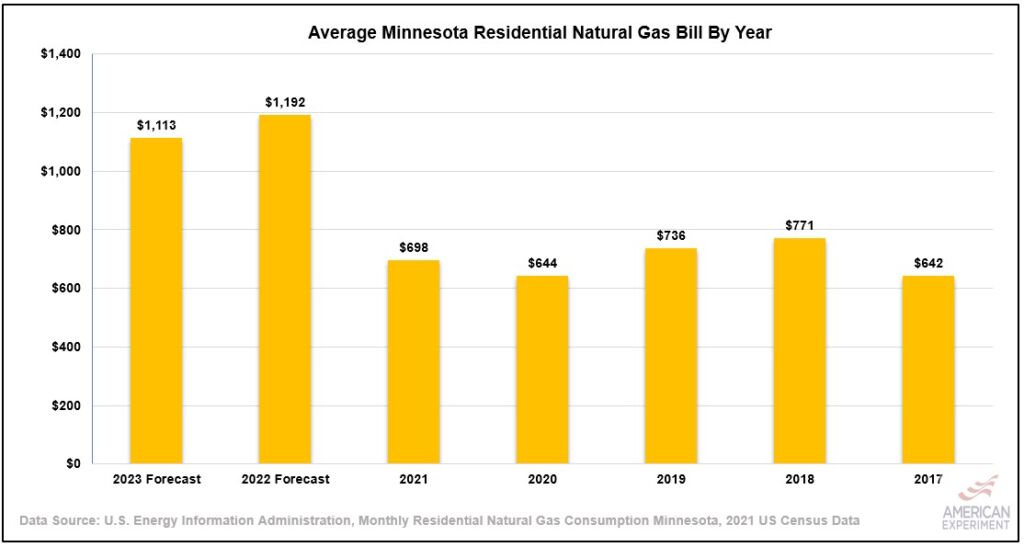25 percent of Minnesota households reduced basic expenses to afford energy costs
A recent report from Lending Tree shows that 25 percent of Minnesota households reduced their purchases of basic living expenses, such as medicine or food, to pay an energy bill in the past 12 months.
This unfortunate reality shows that it is very hard to reduce energy consumption when prices rise; as a result, families are forced to give up on other expenditures when bad public policies drive up energy costs by restricting supply.
Natural gas prices for residential customers reached a new all-time high in 2022, and prices will likely remain elevated through 2023. This means the average Minnesota household could pay over $1,100 for home heating next year, compared to nearly $1,200 in 2022, and $700 in 2021.

The forecast for 2023 in the graph above assumed residential natural gas prices will be 2.3 times higher than the Henry Hub natural gas price forecast from the U.S. Energy Information Admnistration (EIA). It also assumes the average household will use 80 thousand cubic feet of natural gas in 2023, which is the average gas use from 2017 through 2021.
Natural gas prices will remain above their five-year average because drillers are selling more liquefied natural gas (LNG) to Europe to help them offset losses from Russia, and restrictive drilling and pipeline policies from the Biden administration that are inhibiting the ability for gas companies to increase production to compensate for higher imports.
Electricity prices in Minnesota are also higher in 2022 than in past years because Investor Owned Utilities (IOUs) like Xcel Energy and Minnesota Power are unwisely retiring their coal plants decades before the end of their useful lifetimes and replacing them with an expensive combination of wind, solar, and “firm peaking” capacity.
Higher electricity prices are also a reflection of higher natural gas prices. As Minneosta has reduced its consumption of coal for electricity generation, more electricity has been generated using natural gas.
The graph below shows monthly Minnesota residential electricity prices by year. As you can see, 2022 is by far the highest year, and this is before Xcel Energy’s proposed 20 percent rate increase, which is currently being considered by the Minnesota Public Utilities Commission.

Energy prices are rising across the board because liberal politicians at the state and national levels have tried to mandate the use of weather-dependent wind and solar and strangle the development of America’s coal, natural gas, and oil production.
This “abstinence only energy policy” for reliable energy sources has gifted Vladimir Putin the leverage he needed to invade Ukraine and cut off gas supplies to Europe. The United States, including Minnesota, needs to show true energy leadership by abandoning these failed policies and returning to energy reality.